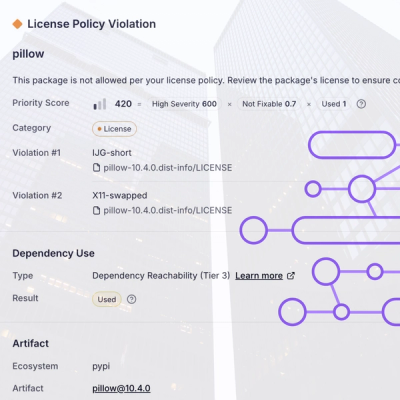
Security News
TC39 Advances 11 Proposals for Math Precision, Binary APIs, and More
TC39 advances 11 JavaScript proposals, with two moving to Stage 4, bringing better math, binary APIs, and more features one step closer to the ECMAScript spec.
azure-asm-network
Advanced tools
Microsoft Azure Virtual Network Management Client Library for node
This project provides a Node.js package that makes it easy to manage Microsoft Azure Virtual Network. Right now it supports:
npm install azure-asm-network
This library support management certificate authentication. To authenticate the library for the REST API calls, you need to
azure account cert export to get the .pem file.var fs = require('fs'),
vnetManagement = require('azure-asm-network');
var vnetManagementClient = vnetManagement.createNetworkManagementClient(vnetManagement.createCertificateCloudCredentials({
subscriptionId: '<your subscription id>',
pem: fs.readFileSync('<your pem file>')
}));
var xml2js = require("xml2js");
var affinityGroupName = "affinitygroup01";
var vnetSiteName = "vnet01";
var subnetName = "subnet01";
// List all the virtual networks under a subscription.
vnetManagementClient.networks.list(function (err, result) {
if (err) {
console.error(err);
} else {
console.info(result);
}
});
// Get the virtual network configuration xml.
vnetManagementClient.networks.getConfiguration(function (err, result) {
if (err) {
console.error(err);
} else {
// Create a new virtual network site.
xml2js.parseString(result.configuration, function (err2, config) {
var vnets = config.NetworkConfiguration.VirtualNetworkConfiguration[0].VirtualNetworkSites[0].VirtualNetworkSite;
vnets.push({
"$": {
AffinityGroup: affinityGroupName,
name: vnetSiteName
},
AddressSpace: [{
AddressPrefix: ["10.0.0.0/8"]
}],
Subnets: [{
Subnet: [{
"$": {
name: subnetName
},
AddressPrefix: ["10.0.0.0/8"]
}]
}]
});
vnetManagementClient.networks.setConfiguration({
configuration: (new xml2js.Builder()).buildObject(config)
}, function (err3, result3) {
if (err3) {
console.error(err3);
} else {
console.info(result3);
}
});
});
}
});
FAQs
Microsoft Azure Virtual Network Management Client Library for node
The npm package azure-asm-network receives a total of 11,021 weekly downloads. As such, azure-asm-network popularity was classified as popular.
We found that azure-asm-network demonstrated a not healthy version release cadence and project activity because the last version was released a year ago. It has 1 open source maintainer collaborating on the project.
Did you know?

Socket for GitHub automatically highlights issues in each pull request and monitors the health of all your open source dependencies. Discover the contents of your packages and block harmful activity before you install or update your dependencies.

Security News
TC39 advances 11 JavaScript proposals, with two moving to Stage 4, bringing better math, binary APIs, and more features one step closer to the ECMAScript spec.

Research
/Security News
A flawed sandbox in @nestjs/devtools-integration lets attackers run code on your machine via CSRF, leading to full Remote Code Execution (RCE).

Product
Customize license detection with Socket’s new license overlays: gain control, reduce noise, and handle edge cases with precision.